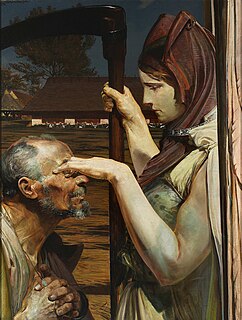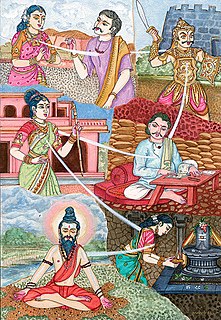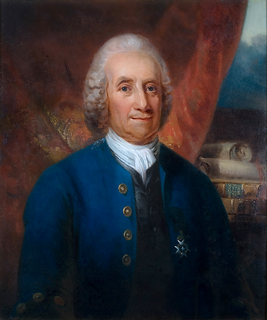 W
WʻAbasa is the 80th chapter (sura) of the Qur'an with 42 verses (ayat). It is a Meccan sura. The Surah is so designated after the word `abasa with which it opens.
 W
WThe Afterlife Experiments is a book written by Gary Schwartz and William L. Simon, with a foreword by Deepak Chopra. The book contains four reports detailing a series of experiments that utilized mediums and sitters to investigate whether or not there is life after death.
 W
WThe allegory of the long spoons is a parable that shows the difference between heaven and hell by means of people forced to eat with long spoons. It is attributed to Rabbi Haim of Romshishok, as well as other sources.
 W
WAncient Egyptian afterlife beliefs were centered around a variety of complex rituals that were influenced by many aspects of Egyptian culture. Religion was a major contributor, since it was an important social practice that bound all Egyptians together. For instance, many of the Egyptian gods played roles in guiding the souls of the dead through the afterlife. With the evolution of writing, religious ideals were recorded and quickly spread throughout the Egyptian community. The solidification and commencement of these doctrines were formed in the creation of afterlife texts which illustrated and explained what the dead would need to know in order to complete the journey safely.
 W
WAncient Greek funerary practices are attested widely in the literature, the archaeological record, and the art of ancient Greece. Finds associated with burials are an important source for ancient Greek culture, though Greek funerals are not as well documented as those of the ancient Romans.
 W
Wal-Balad, is the 90th Surah or chapter of the Qur'an. It is composed of 20 ayat (verses).
 W
WBarddas is a book of material compiled and written by the Welsh writer and literary forger Iolo Morganwg. Though purported to be an authentic compilation of ancient Welsh bardic and druidic theology and lore, its contents are largely Iolo's own invention. The work was published by John Williams for the Welsh Manuscripts Society in two volumes, 1862 and 1874.
The Book of Ardā Wīrāz is a Zoroastrian religious text of the Sasanian era written in Middle Persian. It contains about 8,800 words. It describes the dream-journey of a devout Zoroastrian through the next world. The text assumed its definitive form in the 9th-10th centuries after a long series of emendations.
 W
WProf. Thomas Lynn Bradford of Detroit, Michigan, is best known for committing suicide in an attempt to ascertain the existence of an afterlife and communicate that information to a living accomplice, Ruth Doran. On February 6, 1921, Bradford sealed his apartment in Detroit, blew out the pilot on his heater, and turned on the gas, which was successful in killing him.
 W
Wal-Burūj is the eighty-fifth chapter (surah) of the Quran with 22 verses (ayat). The word "Al-Burooj" in the first verse is usually translated to 'stars', or more specifically, 'great stars'. The word Al-Burooj is the plural of Burj which means fort or tower; something that can be seen from a distance.
The Chinvat Bridge [ʧinva:t] or the Bridge of the Requiter in Zoroastrianism is the sifting bridge, which separates the world of the living from the world of the dead. All souls must cross the bridge upon death. The bridge is guarded by two four-eyed dogs. A related myth is that of Yama, the Hindu ruler of Hell who watches the gates of Hell with his two four-eyed dogs.
 W
WConsciousness after death is a common theme in society and culture in the context of life after death. Scientific research has established that the mind and consciousness are closely connected with the physiological functioning of the brain, the cessation of which defines brain death. However, many believe in some form of life after death, which is a feature of many religions.
 W
WDeathbed phenomena refers to a range of experiences reported by people who are dying. There are many examples of deathbed phenomena in both non-fiction and fictional literature, which suggests that these occurrences have been noted by cultures around the world for centuries, although scientific study of them is relatively recent. In scientific literature such experiences have been referred to as death-related sensory experiences (DRSE). Dying patients have reported to staff working in hospices they have experienced comforting visions.
 W
WThe Divine Comedy is a long Italian narrative poem by Dante Alighieri, begun c. 1308 and completed in 1320, a year before his death in 1321. It is widely considered to be the pre-eminent work in Italian literature and one of the greatest works of world literature. The poem's imaginative vision of the afterlife is representative of the medieval world-view as it had developed in the Western Church by the 14th century. It helped establish the Tuscan language, in which it is written, as the standardized Italian language. It is divided into three parts: Inferno, Purgatorio, and Paradiso.
 W
WFascination with death has occurred throughout human history, characterized by obsessions with death and all things related to death and the afterlife.
 W
WIn folklore, a ghost is the soul or spirit of a dead person or animal that can appear to the living. In ghostlore, descriptions of ghosts vary widely from an invisible presence to translucent or barely visible wispy shapes, to realistic, lifelike forms. The deliberate attempt to contact the spirit of a deceased person is known as necromancy, or in spiritism as a séance. Other terms associated with it are apparition, haunt, phantom, poltergeist, shade, specter or spectre, spirit, spook, and wraith.
 W
WGrave goods, in archaeology and anthropology, are the items buried along with the body.
 W
WImmortality is eternal life, being exempt from death; unending existence. Some modern species may possess biological immortality.
 W
WInferno is the first part of Italian writer Dante Alighieri's 14th-century epic poem Divine Comedy. It is followed by Purgatorio and Paradiso. The Inferno describes Dante's journey through Hell, guided by the ancient Roman poet Virgil. In the poem, Hell is depicted as nine concentric circles of torment located within the Earth; it is the "realm ... of those who have rejected spiritual values by yielding to bestial appetites or violence, or by perverting their human intellect to fraud or malice against their fellowmen".
 W
WLife After Life is a 1975 book written by psychiatrist Raymond Moody. It is a report on a qualitative study in which Moody interviewed 150 people who had undergone near-death experiences (NDEs). The book presents the author's composite account of what it is like to die. On the basis of his collection of cases, Moody identified a common set of elements in NDEs: (a) an overwhelming feeling of peace and well-being, including freedom from pain. (b) the impression of being located outside one's physical body. (c) floating or drifting through darkness, sometimes described as a tunnel. (d) becoming aware of a golden light. (e) encountering and perhaps communicating with a "being of light". (f) having a rapid succession of visual images of one's past. (g) experiencing another world of much beauty.
 W
Wan-Nāziʻāt is the seventy-ninth sura of the Qur'an with 46 ayat. Its name derived from the word wan-nazi‘at with which it opens. The root (n-z-‘) roughly means “to yank out with great force”, although it can also mean “to yearn for” or “to yearn after”.
 W
WParadiso is the third and final part of Dante's Divine Comedy, following the Inferno and the Purgatorio. It is an allegory telling of Dante's journey through Heaven, guided by Beatrice, who symbolises theology. In the poem, Paradise is depicted as a series of concentric spheres surrounding the Earth, consisting of the Moon, Mercury, Venus, the Sun, Mars, Jupiter, Saturn, the Fixed Stars, the Primum Mobile and finally, the Empyrean. It was written in the early 14th century. Allegorically, the poem represents the soul's ascent to God.
 W
WPsychopomps are creatures, spirits, angels, or deities in many religions whose responsibility is to escort newly deceased souls from Earth to the afterlife. Their role is not to judge the deceased, but simply to guide them. Appearing frequently on funerary art, psychopomps have been depicted at different times and in different cultures as anthropomorphic entities, horses, deer, dogs, whip-poor-wills, ravens, crows, vultures, owls, sparrows, and cuckoos. When seen as birds, they are often seen in huge masses, waiting outside the home of the dying.
 W
WPurgatorio is the second part of Dante's Divine Comedy, following the Inferno and preceding the Paradiso. The poem was written in the early 14th century. It is an allegory telling of the climb of Dante up the Mount of Purgatory, guided by the Roman poet Virgil, except for the last four cantos at which point Beatrice takes over as Dante's guide.
 W
WThe Calamity is the 101st chapter (sūrah) of the Quran with 11 verses (āyāt). This chapter takes its name from its first word "qariah", referring to the Quranic view of the end time and eschatology. "Qariah" has been translated to calamity, striking, catastrophe, clatterer, etc. According to Ibn Kathir, a traditionalistic exegete, Al-Qariah is one of the names of the Day of Judgement, like Al-Haaqqa, At-Tammah, As-Sakhkhah and others.
 W
WReincarnation, also known as rebirth or transmigration, is the philosophical or religious belief that the non-physical essence of a living being begins a new life in a different physical form or body after biological death. Resurrection is a similar process hypothesized by some religions, that involves coming back to life in the same body.
 W
WResurrection or anastasis is the concept of coming back to life after death. In a number of religions, a dying-and-rising god is a deity which dies and resurrects. Reincarnation is a similar process hypothesized by other religions, which involves the same person or deity coming back to live in a different body, rather than the same one.
 W
WGeneral resurrection or universal resurrection is the belief that a resurrection of the dead, or resurrection from the dead by which most or all people who have died would be resurrected. Various forms of this concept can be found in Bahai, Christian, Islamic, Jewish and Zoroastrian eschatology.
 W
WRoman funerary practices include the Ancient Romans' religious rituals concerning funerals, cremations, and burials. They were part of time-hallowed tradition, the unwritten code from which Romans derived their social norms.
 W
WShijie, which has numerous translations such as liberation from the corpse and release by means of a corpse, is an esoteric Daoist technique for an adept to transform into a xian, typically using some bureaucratic ruse to evade the netherworld administrative system of life and death registration. The many varieties of shijie range from deceitful cases, such as a person feigning death by substituting the corpse of their recently deceased grandfather as their own, to supernatural cases, such as using a waidan alchemical sword to temporarily create a corpse-simulacrum, which enables one to escape and assume a new identity.
 W
WSpook: Science Tackles the Afterlife (2005), published by W. W. Norton & Company, a non-fiction work by Mary Roach, is a humorous scientific exploration as to whether there is a soul that survives death. In Britain, the title of the book is Six Feet Over: Adventures in the Afterlife.
 W
WFor the film, television director and actor, see Howard Storm (director)
 W
WEmanuel Swedenborg was a Swedish pluralistic-Christian theologian, scientist, philosopher and mystic. He is best known for his book on the afterlife, Heaven and Hell (1758).
 W
WIn mythology and folklore, a vengeful ghost or vengeful spirit is said to be the spirit of a dead person who returns from the afterlife to seek revenge for a cruel, unnatural or unjust death. In certain cultures where funeral and burial or cremation ceremonies are important, such vengeful spirits may also be considered as unhappy ghosts of individuals who have not been given a proper funeral.
 W
WXibalba, roughly translated as "place of fright", is the name of the underworld in Maya mythology, ruled by the Maya death gods and their helpers. In 16th-century Verapaz, the entrance to Xibalba was traditionally held to be a cave in the vicinity of Cobán, Guatemala. Cave systems in nearby Belize have also been referred to as the entrance to Xibalba. In some Maya areas, the Milky Way is viewed as the road to Xibalba.